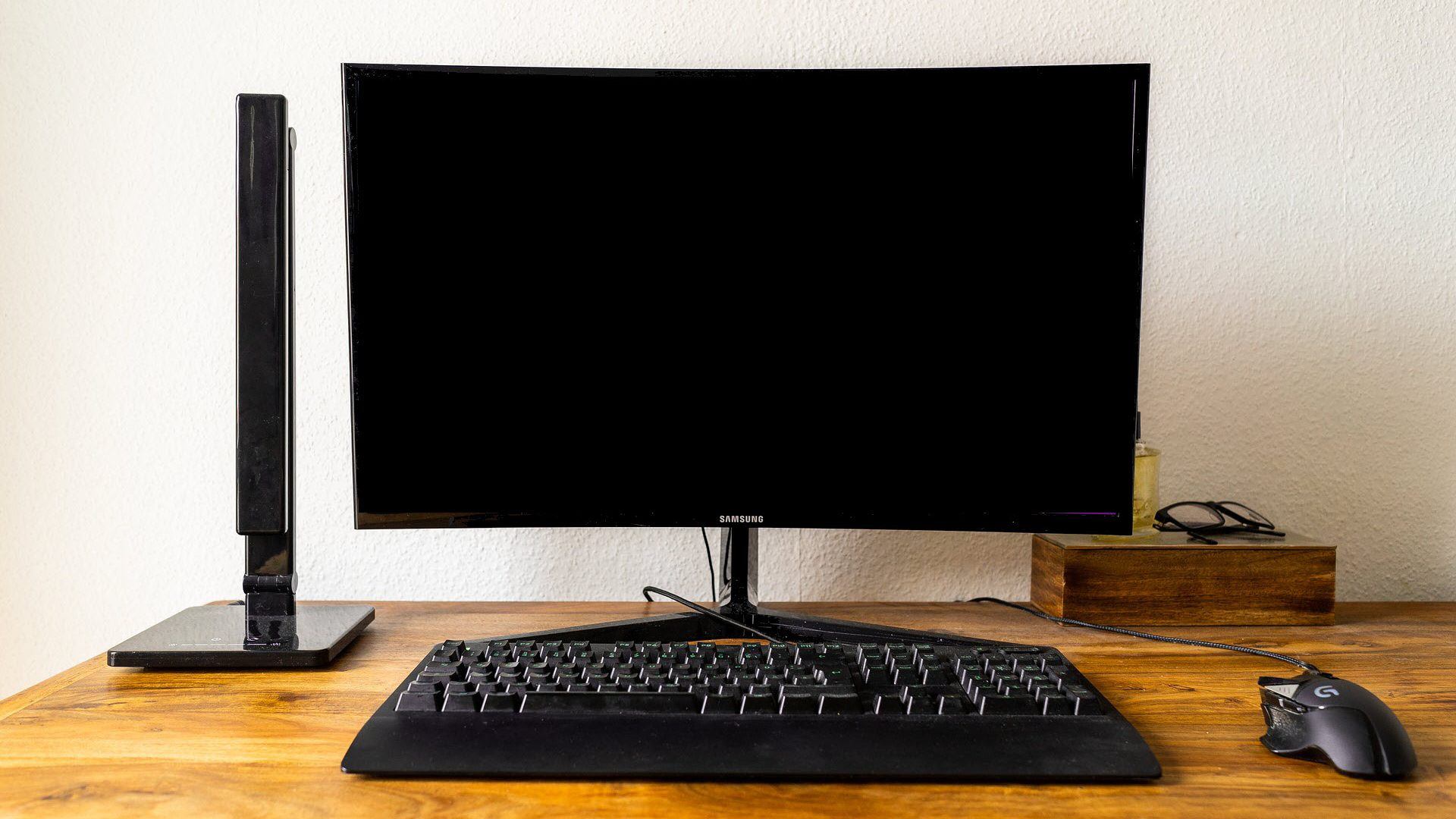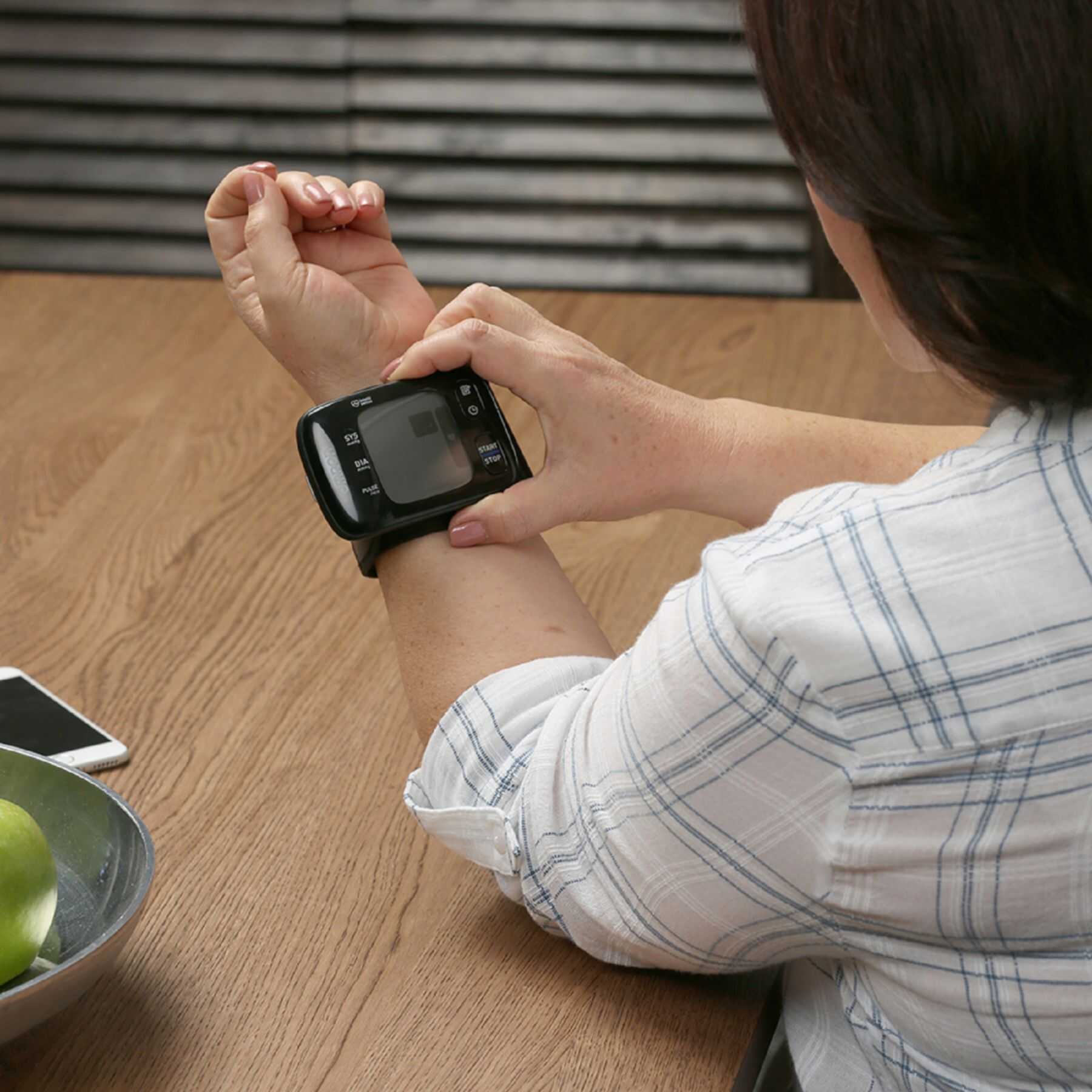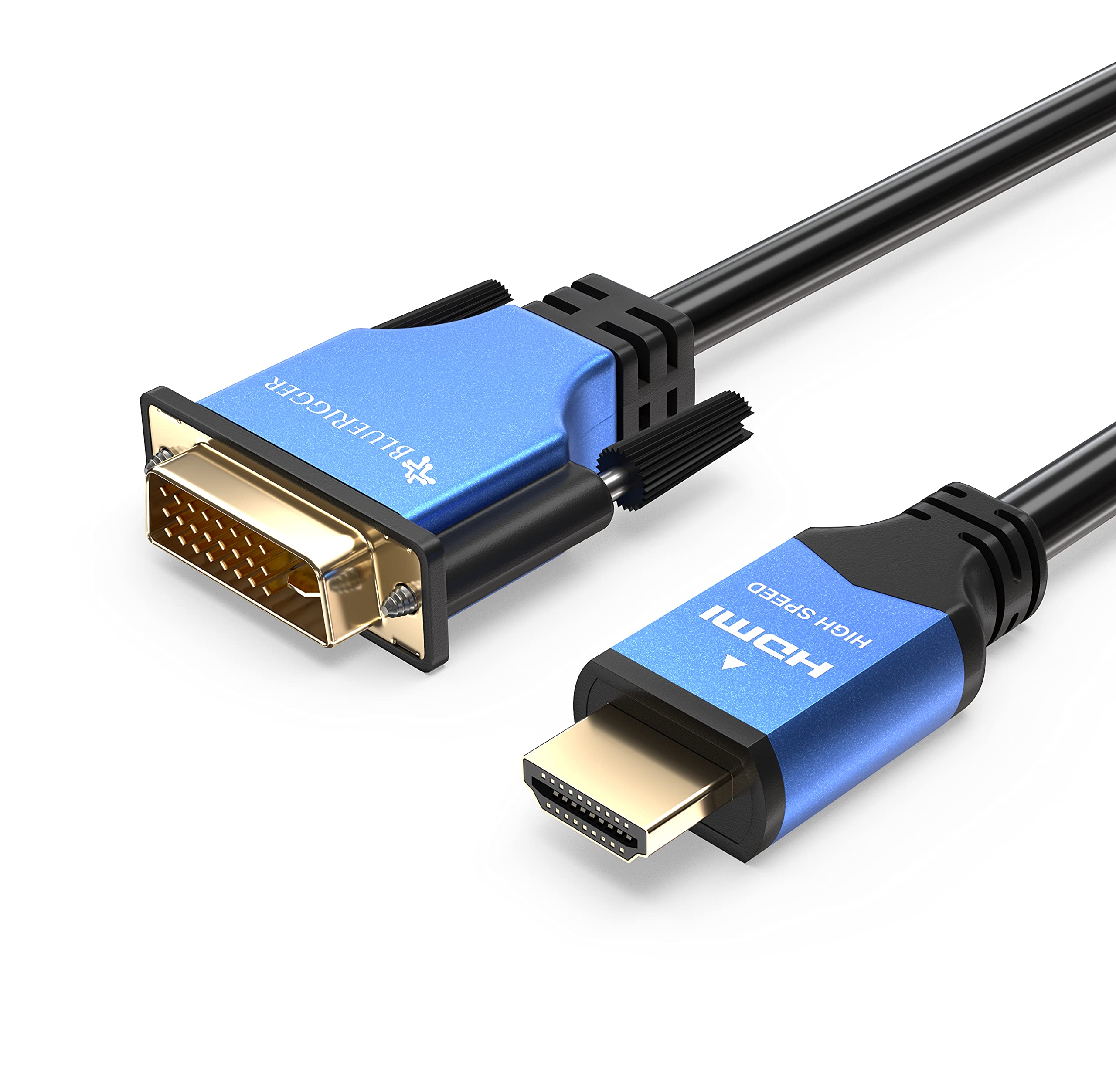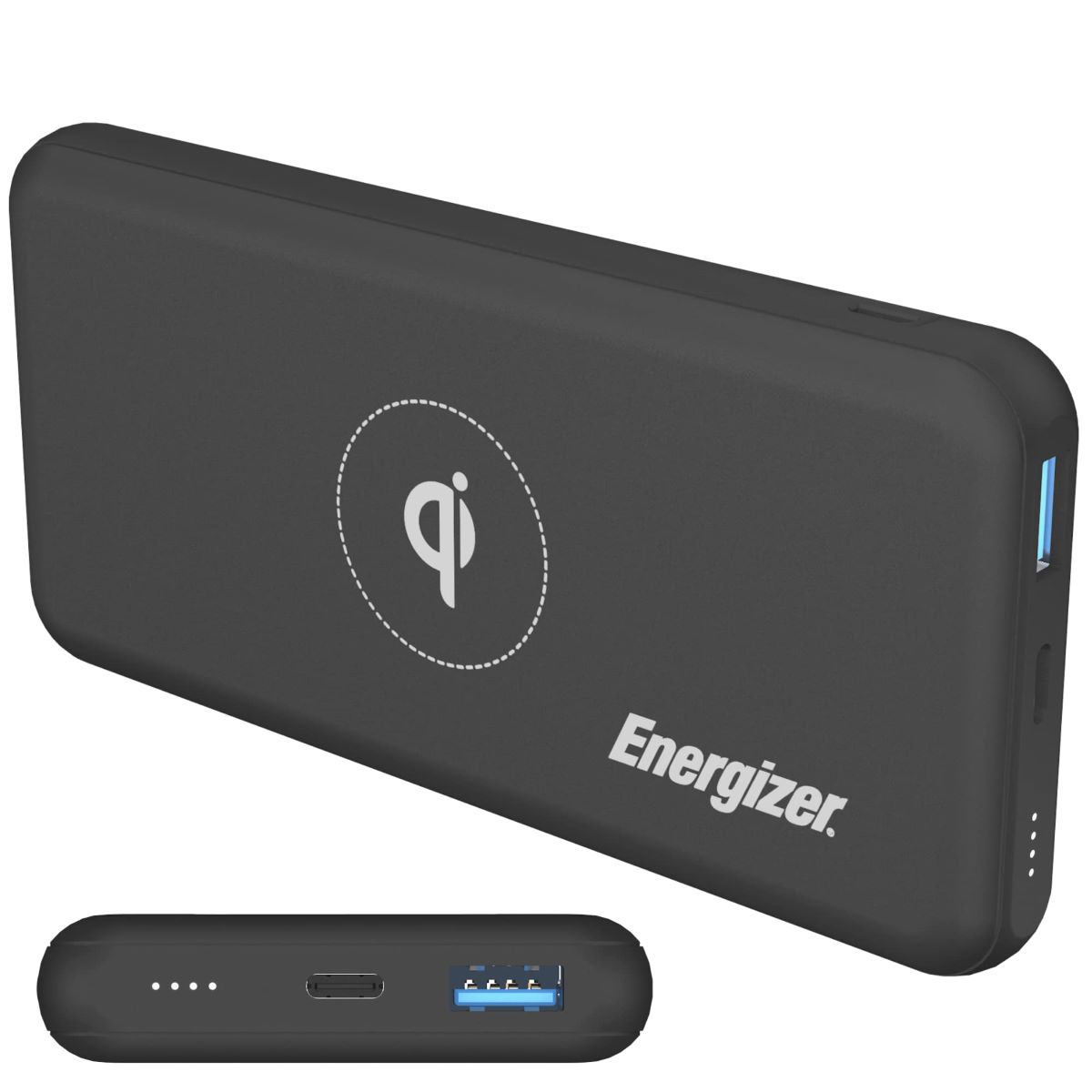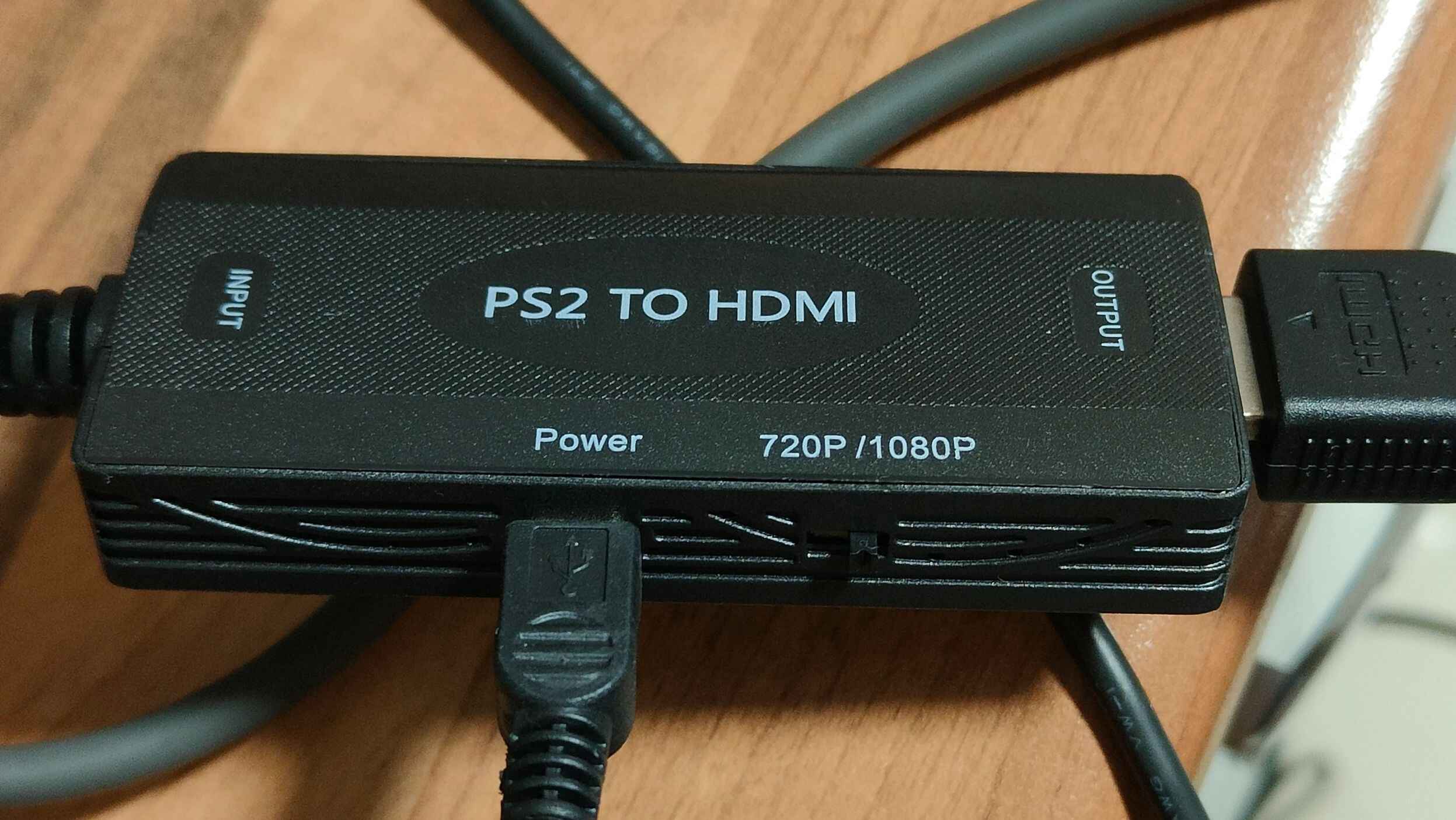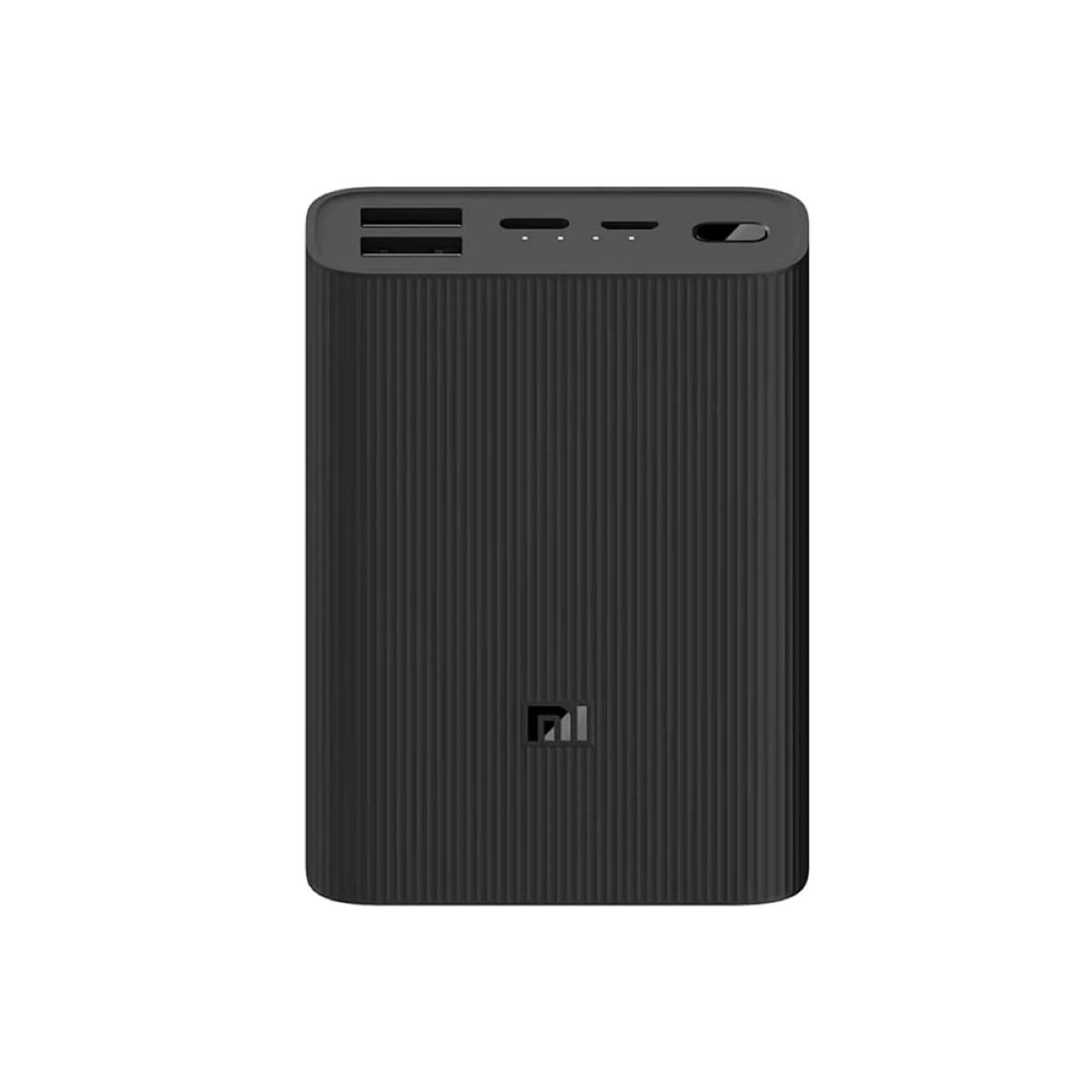Possible Causes for a Black Screen on Your Monitor
A black screen on your monitor can be frustrating and sometimes hard to troubleshoot. There are several potential causes for this issue, and understanding them can help you identify and resolve the problem effectively. Here are some common reasons why your monitor may be going black:
- Power issues: One possible cause of a black screen is a power problem. Make sure your monitor is receiving power and that the power cable is securely connected. Consider testing the power outlet and trying a different cable if necessary.
- Connection problems: Loose or faulty cables can also result in a black screen. Check the cables connecting your monitor to your computer and ensure they are properly plugged in. If using HDMI or DisplayPort, try using different ports or cables.
- Graphics card issues: A faulty or outdated graphics card driver can cause your monitor to go black. Make sure you have the latest driver installed and consider updating or rolling back the driver if necessary.
- Display settings: Incorrect display settings can sometimes lead to a black screen. Check the resolution, refresh rate, and display mode settings on your computer to ensure they are compatible with your monitor.
- Backlight problems: If your monitor has a backlight, a malfunctioning backlight can cause the screen to go black. Look for any signs of a dim or flickering backlight and consider contacting technical support for further assistance.
These are just a few potential causes for a black screen on your monitor. It’s important to troubleshoot each possibility to determine the exact issue you are facing. In the next section, we will provide troubleshooting tips to help you fix the problem and get your monitor back up and running.
Troubleshooting Tips to Fix a Black Screen on Your Monitor
Dealing with a black screen on your monitor can be frustrating, but there are several troubleshooting steps you can take to resolve the issue. Follow these tips to get your monitor working again:
- Check the power: Ensure that your monitor is receiving power and that the power cable is securely connected. Try plugging the monitor into a different power outlet and verify that the power light is on.
- Inspect the connections: Make sure all cables connecting your monitor to your computer are properly plugged in. If using HDMI or DisplayPort, try using different ports or cables to rule out any connection issues.
- Restart your computer: Sometimes, a simple restart can fix the black screen problem. Restart your computer and see if the monitor displays properly upon reboot.
- Update graphics card driver: A faulty or outdated graphics card driver can cause a black screen. Visit the manufacturer’s website and download/install the latest driver for your graphics card.
- Adjust display settings: Incorrect display settings can result in a black screen. Access your computer’s display settings and ensure the resolution, refresh rate, and display mode are compatible with your monitor.
- Troubleshoot the backlight: If your monitor has a backlight, check for any signs of a dim or flickering backlight. Contact technical support for further assistance if you suspect a backlight issue.
- Disconnect external devices: Sometimes, connected external devices can cause conflicts or signal issues. Disconnect any external devices, such as secondary monitors or USB devices, and check if the black screen problem persists.
- Test with a different computer or monitor: To determine if the issue lies with your monitor or computer, try connecting your monitor to a different computer or test a different monitor on your computer. This can help isolate the problem.
- Reset your computer’s BIOS/UEFI: If you are comfortable doing so, consider resetting your computer’s BIOS/UEFI settings to their default values. Consult your computer’s manual or seek guidance from technical support.
- Seek professional assistance: If all else fails, and you’re still experiencing a black screen, it may be time to consult a professional technician or contact the manufacturer’s support for further assistance.
By following these troubleshooting tips, you can increase the chances of resolving the black screen problem on your monitor. Remember to test each step and proceed to the next one only if the issue persists. With some patience and careful troubleshooting, you’ll hopefully be able to get your monitor back to normal functioning.
Is Your Graphics Card Causing the Black Screen Issue?
A common culprit behind a black screen on your monitor is a faulty or outdated graphics card. The graphics card is responsible for rendering images and videos on your screen, and if it’s experiencing issues, it can result in a black screen. Here’s how you can determine if your graphics card is causing the problem:
1. Update Graphics Card Driver: Begin by ensuring that you have the latest driver installed for your graphics card. Visit the manufacturer’s website or use a driver update tool to download and install the updated driver. Outdated or incompatible drivers can often lead to display issues.
2. Check for Physical Damage: Inspect your graphics card for any signs of physical damage, such as loose connectors, bent pins, or a visibly damaged circuit board. If you notice any damage, it may indicate a hardware problem that requires professional assistance.
3. Monitor GPU Temperature: Overheating can cause your graphics card to malfunction, leading to a black screen. Use monitoring software to check the temperature of your GPU while your computer is running graphics-intensive tasks. If the temperature exceeds the safe operating range, consider cleaning the GPU heatsink or replacing the thermal paste.
4. Run Diagnostic Tools: Many graphics card manufacturers provide diagnostic tools that can help identify problems with the GPU. These tools can perform tests on the graphics card’s memory, fan speeds, and other components to pinpoint any issues. Check the manufacturer’s website for appropriate diagnostic tools and follow the instructions provided.
5. Test with a Different Graphics Card: If you have access to another graphics card, try swapping out your current card with the known working one. If the black screen issue is resolved with the replacement graphics card, it suggests that your original card is likely the source of the problem.
If you’ve exhausted these troubleshooting steps and suspect that your graphics card is indeed causing the black screen issue, it may be necessary to replace the card or seek professional help. Graphics card issues can be complex, and attempting repairs without proper knowledge and tools can lead to further damage.
Keep in mind that other factors such as driver conflicts or hardware incompatibilities could also be contributing to the black screen problem. It’s essential to consider all possibilities and rule out other potential causes to ensure an accurate diagnosis. In the following sections, we will explore other potential causes for a black screen on your monitor and provide troubleshooting tips to address them.
Could it be a Problem with Your Monitor’s Connection?
A loose or faulty connection between your monitor and your computer can often be a culprit behind a black screen. It’s important to check the connections and ensure they are secure and functioning properly. Here are some steps to determine if the problem lies with your monitor’s connection:
1. Check the Cable: Begin by inspecting the cable connecting your monitor to your computer. Ensure that it’s firmly plugged in at both ends and that there are no visible signs of damage or fraying. If you notice any issues, consider replacing the cable.
2. Try a Different Cable or Port: If possible, try using a different cable or a different port on your computer. This can help determine if the issue is with the cable itself or the port it’s connected to. For example, if you’re using HDMI, try using a different HDMI cable or port.
3. Clean the Connectors: Over time, dust and debris can accumulate on the connectors of your monitor cable, leading to a poor connection. Use a soft cloth or compressed air to gently clean the connectors. Make sure to power off your computer and monitor before attempting this.
4. Check for Bent Pins: If you’re using a VGA or DVI cable, inspect the connector for any bent or damaged pins. A bent pin can disrupt the signal between the monitor and the computer, resulting in a black screen. If you find any bent pins, try straightening them carefully using a small tool.
5. Test with a Different Monitor: If possible, connect your computer to a different monitor and see if it displays properly. This can help determine if the issue is specific to your monitor or if it’s related to the computer or graphics card.
6. Consider Using an Adapter: If you’re using a display cable with an adapter, such as HDMI to DVI or DisplayPort to VGA, try using a different adapter or connect the cable directly if possible. Adapters can sometimes introduce compatibility issues and result in display problems.
If you’ve tried these steps and the black screen issue persists, it’s possible that the problem lies elsewhere, such as with your graphics card, operating system, or monitor driver. In the next sections, we will explore other potential causes for a black screen on your monitor and provide troubleshooting tips to address them.
Are Your Display Settings Causing the Monitor to Go Black?
Incorrect display settings on your computer can sometimes lead to a black screen on your monitor. It’s important to review and adjust your display settings to ensure they are compatible with your monitor. Here are some steps to determine if your display settings are causing the issue:
1. Check the Resolution: Open the display settings on your computer and verify that the resolution is correctly set for your monitor. Select the native resolution of your monitor for the best display quality. Choosing an unsupported resolution can result in a black screen.
2. Adjust the Refresh Rate: The refresh rate refers to the number of times your monitor updates the display image per second. If the refresh rate is set too high for your monitor’s capabilities, it can cause display issues, including a black screen. Ensure that the refresh rate is within the supported range of your monitor.
3. Verify the Display Mode: Check the display mode in the settings and make sure it is set to “Extend” or “Duplicate” depending on your preference. The “Extend” mode allows you to use multiple monitors, while the “Duplicate” mode mirrors the display on all connected monitors.
4. Check for Overscan/Underscan Settings: Some monitors have overscan or underscan settings that can cause the display to go beyond or shrink within the boundaries of the monitor’s screen. If enabled, it can result in a black screen. Adjust the overscan/underscan settings to fit the display properly.
5. Reset Display Settings: If you’ve made changes to your display settings and suspect they may be causing the black screen issue, you can try resetting the settings to their default values. This can help eliminate any conflicting configuration that may be causing the problem.
6. Update Graphics Card Driver: An outdated or incorrect graphics card driver can lead to display issues, including a black screen. Make sure you have the latest driver installed for your graphics card. Visit the manufacturer’s website or use a driver update tool to download and install the appropriate driver.
If you’ve checked and adjusted your display settings as necessary and the black screen issue persists, it’s recommended to continue troubleshooting other potential causes. In the following sections, we will explore additional factors that may be responsible for a black screen on your monitor and provide further troubleshooting tips to address them.
How to Determine if the Monitor’s Backlight is the Culprit
If your monitor has a backlight, a malfunctioning backlight can be the cause of a black screen. The backlight is responsible for illuminating the display and if it’s not functioning properly, it can result in a black or dim screen. Here’s how you can determine if the monitor’s backlight is the culprit:
1. Look for Dim or Flickering Display: Turn on your monitor and observe the screen. If the display appears unusually dim or if you notice flickering, it may indicate a problem with the backlight. Keep in mind that some monitors have adjustable brightness settings, so make sure to check if the brightness is set too low.
2. Shine a Light on the Screen: In a dark room, switch on your monitor and use a flashlight to shine it directly onto the screen at a close distance. If you can faintly see the content displayed on the monitor with the light, it suggests that the backlight is not functioning properly.
3. Check for Backlight Bleeding: Backlight bleeding refers to the uneven distribution of light around the edges or corners of the screen. It can create patches of brighter or darker areas on the display. If you notice significant backlight bleeding, it may indicate a problem with the backlight panel.
4. Test the Monitor on Another System: Connect your monitor to another computer or laptop and see if the black screen issue persists. If the monitor works fine on another system, it further suggests that the problem lies with your computer’s graphics card or other related components rather than the monitor’s backlight.
5. Contact Technical Support: If you suspect a backlight issue based on the above observations, it’s recommended to contact the manufacturer’s technical support. They can provide you with specific troubleshooting steps or guide you through the process of repairing or replacing the monitor if it’s still under warranty.
Keep in mind that not all monitors have a backlight, as some newer models utilize different display technologies such as OLED or AMOLED. In such cases, backlight-related issues may not be applicable. If you’ve determined that the backlight is not the culprit or have ruled out other potential causes, it’s important to explore other factors that may be responsible for the black screen on your monitor. The next sections will delve into these factors and provide further troubleshooting tips to address them.
Is a Faulty Power Supply Causing the Black Screen?
A faulty power supply can be a potential culprit behind a black screen on your monitor. A stable and adequate power supply is essential for your monitor to function properly. Here’s how you can determine if a faulty power supply is causing the black screen issue:
1. Check Power Cables: Ensure that the power cables connecting your monitor are securely plugged into both the monitor and the power outlet. Make sure there are no loose connections or frayed cables that could disrupt the power supply.
2. Test with a Different Power Outlet: Try plugging your monitor into a different power outlet to rule out any issues with the specific outlet you were using. Sometimes, the outlet itself may not provide a stable power supply, causing the black screen.
3. Power Surge Protector: If you’re using a power surge protector or a power strip, ensure that it’s functioning properly. Faulty surge protectors or power strips can hinder the power supply to your monitor and result in a black screen. Try connecting your monitor directly to a wall outlet for testing purposes.
4. Power Supply Unit (PSU) Issues: If you’re using a desktop computer, there may be issues with the power supply unit (PSU) that is affecting the power supply to your monitor. Consider checking the PSU for any signs of failure, such as strange fan noises, burning smells, or visible damage. A malfunctioning PSU may not provide enough power to properly drive the monitor.
5. Test with a Different Power Cable: If available, try using a different power cable for your monitor. A faulty power cable can disrupt the power supply and result in a black screen. Testing with a different cable can help rule out cable-related issues.
If you’ve tested the power supply and suspect that a faulty power supply is causing the black screen, it may be necessary to replace the power supply or consult with a professional technician for further assistance. They can diagnose the power supply issue and provide the appropriate solutions based on the specific problem encountered.
It’s important to note that there may be other factors contributing to the black screen on your monitor, such as graphics card issues, connection problems, or software conflicts. In the following sections, we will explore these potential causes and provide further troubleshooting tips to address them.
Could Overheating Be the Reason Behind Your Monitor’s Black Screen?
In some cases, overheating can be the reason behind a black screen on your monitor. Monitors can generate a significant amount of heat over time, especially if they are used for extended periods or placed in an environment with poor ventilation. Here’s how you can determine if overheating is the culprit:
1. Check Monitor’s Ventilation: Ensure that your monitor’s ventilation is not blocked by dust, debris, or any objects placed too close to it. A lack of proper airflow can contribute to overheating. Use compressed air or a soft brush to clean any accumulated dust from the vents and ensure that there is adequate space around the monitor for proper airflow.
2. Monitor Temperature: Monitor temperature monitoring may not be possible for all models, but if your monitor supports temperature measurement, use appropriate software to monitor the temperature of your monitor while it’s in use. If the temperature exceeds recommended levels specified by the manufacturer, it’s possible that overheating is causing the black screen issue.
3. Reduce Brightness and Backlight: High brightness and backlight settings can generate more heat. Consider decreasing the brightness level and adjusting the backlight settings to a comfortable level. This can help in reducing the overall temperature of the monitor during usage.
4. Monitor Placement: Ensure that your monitor is placed in a well-ventilated area away from direct sunlight or any sources of heat. Excessive heat from external sources can add to the overall temperature and contribute to the likelihood of overheating.
5. Monitor Usage Time: Monitors are designed to handle regular usage, but extended usage without breaks or periods of rest can lead to overheating. If you typically use your monitor for long periods of time, consider taking regular breaks to allow it to cool down and reduce the chances of overheating.
If you suspect that overheating is the cause of the black screen on your monitor, it’s essential to address the issue promptly to prevent further damage. Ensure proper ventilation, adjust brightness and backlight settings, and monitor the temperature. If the problem persists, it’s recommended to seek professional assistance to inspect and diagnose any potential hardware issues causing the overheating.
Remember that there could be other factors contributing to the black screen, such as graphics card issues, display settings, or connection problems. In the following sections, we will explore these potential causes and provide further troubleshooting tips to address them.
Is Your Operating System the Source of the Black Screen Issue?
It’s possible that your operating system (OS) could be the source of the black screen issue on your monitor. Software conflicts, driver errors, or incorrect settings can cause your OS to display a black screen instead of the expected content. Here’s how you can determine if your OS is the culprit:
1. Check for Recent Software Changes: If you recently installed or updated any software or drivers before encountering the black screen, it’s possible that they are causing conflicts with your OS. Try uninstalling or rolling back the recently installed or updated software to see if the black screen issue resolves.
2. Boot into Safe Mode: Booting your computer into Safe Mode can help determine if a third-party application or service is causing the black screen. If your computer successfully boots into Safe Mode and the screen works properly, it suggests that a software conflict or driver issue is the cause.
3. Update Operating System and Drivers: Outdated or incompatible drivers can sometimes lead to a black screen. Ensure that your OS is up to date with the latest updates and patches. Additionally, update your graphics card drivers from the manufacturer’s website to ensure compatibility with the OS.
4. Check Screen Saver and Sleep Settings: Incorrect screen saver or sleep settings can cause the monitor to go into power-saving mode or display a black screen after a certain period of inactivity. Check your OS settings and adjust the screen saver and sleep settings as necessary.
5. Run System Recovery or Reset: If the black screen issue continues, you may try using the system recovery options provided by your OS. Restore your system to a previous restore point, perform a system reset, or use other recovery options available in your OS to resolve any software-related issues that could be causing the black screen.
6. Monitor Another Display: Connect your computer to another display, such as a TV or a different monitor, to see if the black screen issue persists. If the alternative display works correctly, it suggests that the problem lies with your monitor or its connection rather than the OS.
If the black screen issue persists despite the above steps, it may be necessary to seek further assistance from technical support or consult with a professional technician who can diagnose and address any complex software issues contributing to the problem.
Keep in mind that there may be other factors contributing to the black screen on your monitor, such as graphics card issues, connection problems, or hardware failures. In the following sections, we will explore these potential causes and provide further troubleshooting tips to address them.
Is Your Monitor’s Firmware or Driver Outdated?
Outdated firmware or drivers for your monitor can potentially cause a black screen issue. Firmware is the software embedded in your monitor’s hardware, and drivers are software programs that allow your operating system to communicate with the monitor. If either of these components is outdated or incompatible, it can result in a black screen on your monitor. Here’s how you can determine if your monitor’s firmware or driver is the culprit:
1. Check Manufacturer’s Website: Visit the manufacturer’s website for your monitor model and search for any available firmware updates. Download and install the latest firmware if one is available. Firmware updates can address known issues and enhance compatibility with your hardware.
2. Update Monitor Driver: Check if you have the latest monitor driver installed on your computer. The driver allows your operating system to recognize and communicate with the monitor properly. Visit the manufacturer’s website or use a driver update tool to ensure you have the most up-to-date driver installed.
3. Verify Compatibility: Ensure that the firmware and driver versions you are using are compatible with each other and with your operating system. Incompatible versions can lead to conflicts, resulting in a black screen. Refer to the manufacturer’s guidelines or documentation for compatibility information.
4. Monitor Firmware Reset: Some monitors allow you to reset the firmware to its default settings. Check your monitor’s user manual or the manufacturer’s website for instructions on how to perform a firmware reset. This can help resolve any firmware-related issues causing the black screen.
5. Test Monitor on Another System: If possible, connect your monitor to another computer or laptop and check if it experiences the same black screen issue. If the monitor works fine on another system, it suggests that the firmware or driver on your original system may need attention.
6. Contact Technical Support: If you’ve updated the firmware and driver, ensured compatibility, and the black screen issue persists, it’s recommended to contact the manufacturer’s technical support. They can provide further guidance, troubleshoot more advanced firmware or driver-related issues, or suggest additional solutions specific to your monitor model.
Remember that other factors, such as graphics card issues, connection problems, or software conflicts, could also contribute to the black screen on your monitor. In the following sections, we will explore these potential causes and provide further troubleshooting tips to address them.
Hardware Issues that Can Lead to a Black Screen on Your Monitor
There are several hardware-related issues that can potentially result in a black screen on your monitor. It’s important to consider these factors when troubleshooting the problem. Here are some hardware issues to be aware of:
1. Faulty Graphics Card: A defective or malfunctioning graphics card can cause a black screen. If your graphics card is not functioning properly, it may not be able to render the display correctly, leading to a blank screen. Consider testing your monitor on another system or testing a different monitor on your computer to determine if the graphics card is the issue.
2. Damaged Monitor Cable: A damaged or faulty cable connecting your monitor to your computer can disrupt the signal and result in a black screen. Inspect the cable for any visible damage, such as frayed wires or bent pins, and consider replacing it if necessary.
3. Monitor Power Supply Issues: If your monitor is not receiving a stable power supply, it may not turn on properly or may display a black screen. Ensure that the power cable and outlet are functioning correctly, and consider testing the monitor with a different power cable or outlet to rule out any power supply-related issues.
4. Defective Monitor Backlight or Inverter: If your monitor has a backlight, a malfunctioning backlight or inverter can cause a black screen. The backlight provides the illumination for the display, and the inverter controls its functionality. If either of these components is defective, it can result in a dark or blank screen. Contact technical support for further assistance in diagnosing and resolving any backlight or inverter issues.
5. Overheating Components: Overheating of internal components, such as the graphics card or chipset, can cause system instability and lead to a black screen. Ensure that your computer is adequately ventilated, with proper airflow to prevent excessive heat buildup. Clean any dust or debris that may be obstructing the cooling fans or heatsinks.
6. Faulty Monitor Display Panel: In some cases, a faulty display panel can cause a black screen. This can be a more complicated issue to diagnose, as it typically requires professional inspection and repair/replacement of the monitor. Contact the manufacturer’s support or consult with a technician for further assistance if you suspect a defective display panel.
When troubleshooting a black screen issue, it is important to consider both hardware and software factors. By examining the hardware-related potential causes outlined here, you can further narrow down the source of the problem and determine the appropriate steps for resolution.
Common Software Issues that Cause Monitors to Go Black
Software-related issues can also contribute to a black screen on your monitor. Problems with the operating system, drivers, or incompatible software can interrupt the display output and result in a blank screen. Understanding these common software issues can help in troubleshooting and resolving the problem. Here are some common software-related causes:
1. Driver Conflicts: Conflicting or outdated drivers can interfere with the proper functioning of the graphics card and cause a black screen. Ensure that your graphics card drivers are up to date and compatible with your operating system. Consider uninstalling any unnecessary or conflicting drivers that may be causing issues.
2. Display Mode Settings: Incorrect display mode settings can lead to a black screen. Improperly configured extended display settings or using unsupported resolution settings can result in the screen not displaying any content. Double-check and adjust the display mode settings in your operating system to ensure compatibility with your monitor’s capabilities.
3. Power Management Settings: Power management settings, such as sleep or hibernation mode, can cause the monitor to go black. If the system enters power-saving mode due to inactivity, it may not wake up properly and display a black screen. Adjust the power management settings to prevent the system from entering these modes when not required.
4. Antivirus or Security Software: Antivirus or security software can sometimes interfere with the display output and result in a black screen. Some security applications may have compatibility issues or false positives that affect the monitor’s functionality. Temporarily disabling or configuring the security software settings can help identify if it’s causing the problem.
5. Corrupted System Files or OS Issues: Corrupted system files or operating system issues can lead to a range of display problems, including a black screen. Running a system file checker or performing a system repair through the OS recovery options can help identify and fix any corrupt files or issues within the OS that may be responsible.
6. Malware or Virus Infections: Malware or virus infections can disrupt various system processes, including the display functionality. Perform a full system scan using reputable antivirus software to identify and remove any malware or viruses that might be affecting the display output.
When troubleshooting software-related black screen issues, try to isolate the problem by checking for conflicts, adjusting settings, updating drivers, and running necessary scans. If you’re unsure about making changes to the software or need further assistance, consult with technical support or seek professional help to diagnose and resolve the issue.
Is it Time to Replace Your Monitor?
After going through troubleshooting steps and considering various potential causes for the black screen on your monitor, you may be wondering if it’s time to replace your monitor altogether. While it ultimately depends on the specific circumstances, here are some factors to consider:
1. Age and Usage: If your monitor is quite old and has been heavily used over the years, it may be more prone to hardware failures. Components can wear out over time, and if your monitor frequently experiences issues or displays a black screen, it could be a sign that it has reached the end of its lifespan.
2. Cost of Repair: Assess the cost of repairing your monitor compared to the cost of a new monitor. Sometimes, the repair costs can be significant, especially if the issue is related to the display panel or other major components. If the cost of repair is close to or exceeds the cost of a new monitor, it might be more cost-effective to replace it.
3. Technological Advancements: Consider the technological advancements in the monitor market. Newer models often feature improved display quality, higher resolutions, better energy efficiency, and additional features. If your current monitor is outdated and doesn’t meet your current or future needs, upgrading to a newer model could be beneficial.
4. Persistent Issues: If you’ve exhausted all troubleshooting options, sought technical support, and the black screen issue continues to occur frequently or cannot be resolved, it might be an indication that the underlying problem is more complex or difficult to fix. In such cases, investing in a new monitor can provide a more reliable and hassle-free experience.
5. Warranty and Support: Check if your current monitor is still under warranty. If it is, contact the manufacturer’s support and explore repair or replacement options. Warranty coverage can help alleviate the costs associated with a faulty monitor.
6. Personal Preference: Lastly, consider your personal preferences and requirements. Reflect on aspects such as screen size, resolution, connectivity options, ergonomic features, and any specific needs for your work or entertainment purposes. Investing in a new monitor that meets your needs and preferences can enhance your overall experience.
Ultimately, the decision to replace your monitor depends on a combination of factors, including its age, cost of repair, technological advancements, persisting issues, warranty coverage, and personal preferences. Make an informed decision based on your specific situation to ensure that you have a reliable and functional monitor for your daily activities.







